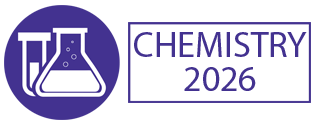Homogeneous Catalysis
Homogeneous Catalysis Is A Type Of Chemical Reaction That Occurs When Two Or More Molecules Come Together And Become Activated Into A New Reaction State. Homogeneous Catalysis Is An Important Tool In Both Organic And Inorganic Chemistry As It Allows For A Diverse Range Of Reactions To Take Place, Often In A Highly Efficient Manner. When Catalysts Are Added To A Reaction Mixture, They Can Change The Energy Barrier Required To Move Forward With The Reaction, Making The Reaction More Efficient. There Are Two Main Types Of Homogeneous Catalysis: Homogeneous Ligand-Based Catalysis And Homogeneous Transition Metal-Based Catalysis. Ligand-Based Catalysis Involves The Use Of Transition Metal Complexes As Catalysts For Reactions. This Type Of Catalysis Is Advantageous Because It Allows For A Relatively Small Number Of Molecules To Be Involved In The Reaction. Transition Metal-Based Catalysis Utilizes Transition Metals Such As Ni, Cr, Co, Cu, And Pt To Facilitate The Reaction. This Type Of Catalysis Is Particularly Useful In Metal-Catalyzed Organic Synthesis, Where The Use Of A Transition Metal Can Improve The Reactivity Of The System. Homogeneous Catalysts Often Act By Binding To The Reactants And Providing What Is Called An Activation Barrier, Which Is A Reaction Energy Needed For The Reaction To Take Place. If The Energy Barrier Is Lowered, The Reaction Proceeds More Quickly, Allowing The Chemicals In The Reaction To Interact. Furthermore, Homogeneous Catalysts Can Also Accelerate Specific Steps Of The Reaction In Order To Optimize Yield And Kinetic Rate. Homogeneous Catalysis Is An Extremely Valuable Tool In Modern Chemistry Because Of The High Level Of Control It Allows. Allowing Reactions To Be Run Under Mild Conditions And Providing Efficient Reaction Pathways Can Often Enable The Synthesis Of Complex Molecules. This Type Of Catalysis Has Been Used In The Synthesis Of Such Drugs As Penicillin, Amphotericin B, And Cisplatin. As Science And Technology Evolve, The Application Of Homogeneous Catalysis In Modern Chemistry Is Expected To Continue To Increase.

Hossam A Gabbar
Ontario Tech University, Canada
Victor John Law
University College Dublin, Ireland
Alexander Bagaturyants
National Research Nuclear University MEPhI, Russian Federation
Sergey Suchkov
N.D. Zelinskii Institute for Organic Chemistry of the Russian Academy of Sciences, Russian Federation
Shree Niwas Chaturvedi
Centre for Aptitude Analysis and Talent Search, India
Pieter Samyn
SIRRIS, Belgium




Title : Advances in plasma-based radioactive waste treatment
Hossam A Gabbar, Ontario Tech University, Canada
Title : Unraveling the ultrastructure and functions of the neuronal membrane skeleton using super-resolution fluorescence microscopy
Zhou Ruobo, Djillali Liabes University of Sidi Bel Abbes, Algeria
Title : Solar box cooker dehydration, and relative humidity endpoint detection, of lamiaceae culinary leaves on the island of Crete
Victor John Law, University College Dublin, Ireland
Title : Nutrient and heavy metal loads from the Ribeiras to Coastal zones: A land-ocean continuum perspective in Madeira Island
Aracelis Del Carmen Narayan Rajnauth, University of Porto, Portugal
Title : Prospective polyoxometalate-based covalent organic framework heterogeneous catalysts
Arash Ebrahimi, Comenius University Bratislava, Slovenia
Title : Eliminating implant failure in humans with nano chemistry: 30,000 cases and counting
Thomas J Webster, Brown University, United States